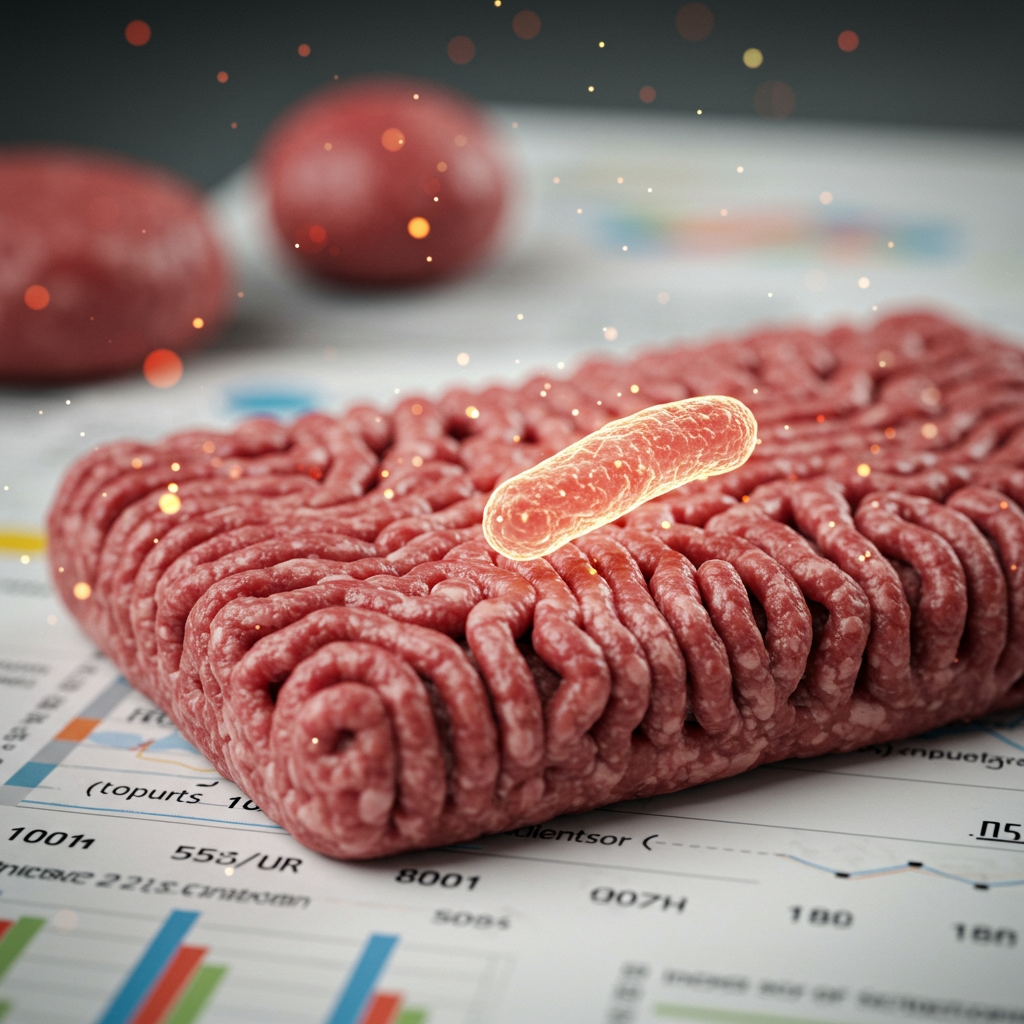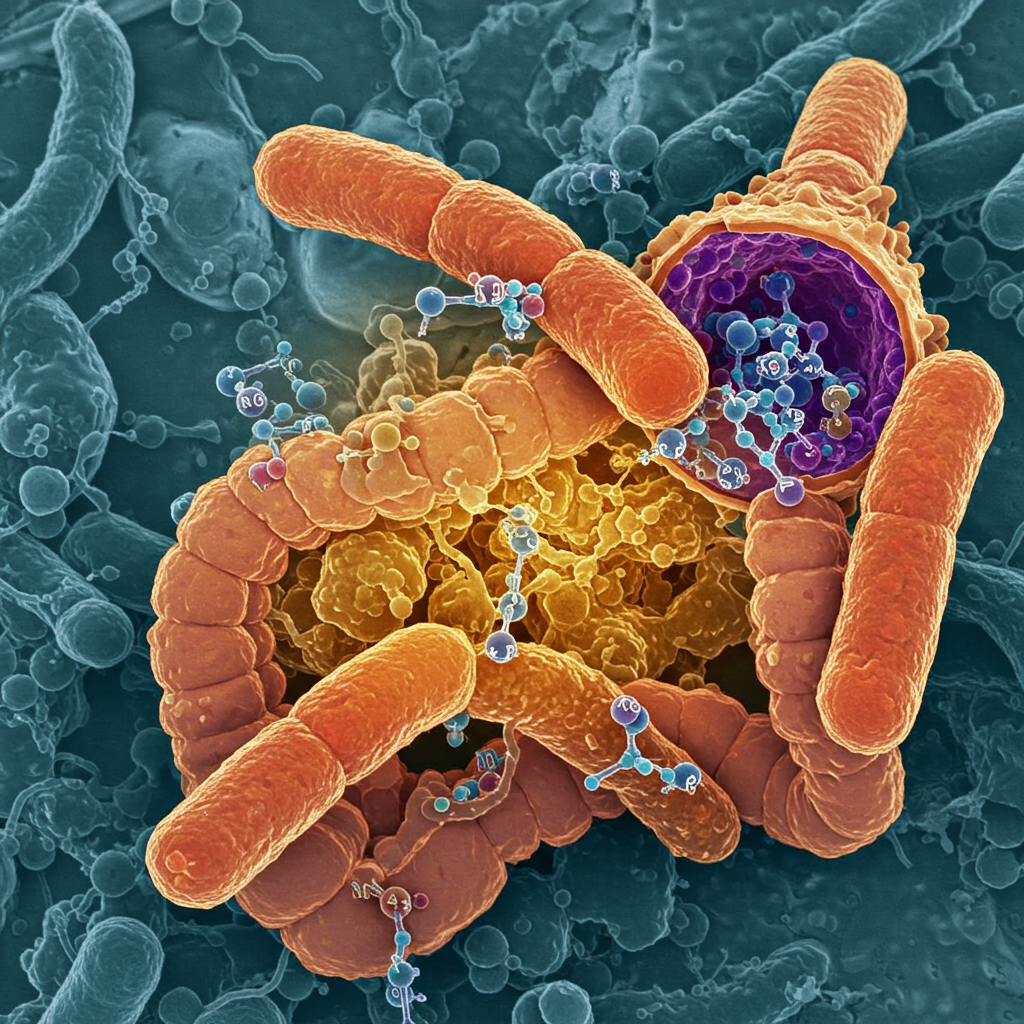New research reveals a surprising link between everyday meat consumption and urinary tract infections (UTIs). A groundbreaking study indicates that nearly one in five UTIs in Southern California patients may stem directly from E. coli strains found in contaminated retail meat. This discovery challenges conventional wisdom about UTI origins, highlighting a significant public health issue that demands attention from consumers, industry, and regulators alike. It transforms our understanding of UTIs from a solely personal health concern into a critical food safety challenge, with profound implications for how we prevent these common infections.
The Startling Connection: Meat and UTIs
For decades, the focus of foodborne E. coli has primarily been on strains causing gastrointestinal illness. However, a recent extensive study, published in the journal mBio, has unveiled a different, underappreciated pathway: E. coli from food-producing animals causing human UTIs. This pivotal four-year investigation in Southern California concluded that 18% of the urinary tract infections analyzed were directly traceable to E. coli originating from retail meat products. This finding is more than double the rate observed in prior studies, signaling an escalating problem that affects millions nationwide.
The study applied a sophisticated technique known as “genomic attribution.” Researchers compared the unique DNA signatures of E. coli strains isolated from UTI patients with those found in meat samples. These samples were collected from grocery stores within the very neighborhoods where the patients resided. This direct genetic matching provided compelling evidence, establishing a clear lineage from contaminated meat to human infection.
Deep Dive into the Research
The research team, spearheaded by scientists at George Washington University and Kaiser Permanente Southern California (KPSC), undertook a massive molecular analysis. They examined over 5,700 isolates of extraintestinal pathogenic E. coli (ExPEC). These isolates came from both UTI patients and retail meat samples, including chicken, turkey, beef, and pork, purchased weekly from major grocery chains between February 2017 and May 2021.
Using whole-genome sequencing and an advanced statistical model, the researchers inferred the host origin of each E. coli isolate. They meticulously looked for specific “mobile genetic elements” (MGEs) that are distinctive to either human or animal E. coli. The prevalence of animal-associated MGEs in human UTI samples served as a strong indicator of an animal source. This innovative approach allowed for an unprecedented level of precision in tracing bacterial origins.
Significantly, the study found the highest E. coli contamination rates in turkey samples (82%), followed by chicken (58%), pork (54%), and beef (47%). Women were particularly vulnerable, with zoonotic ExPEC strains found in 19.7% of their urine samples, compared to 8.5% in men. This disparity underscores the gendered impact of meat-linked UTIs.
A Decade of Discovery: Lance Price’s Work
This groundbreaking study is not an isolated finding. It builds upon more than a decade of dedicated research by Dr. Lance Price, founding director of George Washington University’s Antibiotic Resistance Action Center. Dr. Price has long championed the idea that foodborne E. coli plays a more significant role in human infections than previously understood. His earlier work laid the foundation for these latest insights.
In a 2018 study, Dr. Price and his colleagues identified a specific E. coli strain known to cause serious UTIs globally, finding it prevalent in chicken and turkey meat. A subsequent 2023 study, employing similar methods to the current research, linked 8% of human UTI E. coli isolates in Flagstaff, Arizona, to retail meat. The new Southern California findings, at 18%, represent a startling increase, more than doubling the Flagstaff rate. Dr. Price expressed surprise at this jump, prompting a deeper investigation into the underlying causes.
Beyond Diarrhea: Understanding ExPEC
When most people hear “E. coli,” they often think of severe diarrheal illnesses associated with food poisoning outbreaks. However, the E. coli strains responsible for the majority of UTIs are distinct. These are called extraintestinal pathogenic E. coli (ExPEC), which typically reside asymptomatically in the human and animal gut. Unlike the toxigenic E. coli strains that cause gastrointestinal distress, ExPEC can cause serious disease if it invades beyond the gut, particularly into the urinary tract.
Most UTIs, though often mild, can escalate to more severe invasive infections, including bloodstream infections (sepsis), if left untreated. E. coli in the bloodstream can even be fatal. Dr. Price emphasizes that these ExPEC strains possess specific “special features” that enable them to cause disease once they enter the urinary tract. This redefines our understanding of E. coli as a foodborne threat, extending its danger beyond typical digestive issues.
The Journey of Zoonotic E. coli
The mechanism by which E. coli from meat leads to human UTIs involves a series of steps. Bacteria from contaminated raw meat can enter the human gut through various means. This often occurs during food preparation, such as handling raw chicken or turkey, or from consuming undercooked meat. Once these animal-derived E. coli strains colonize the human gut, they become part of the body’s natural flora.
From the gut, these bacteria can then easily transfer to the urethra, especially due to improper hygiene. Once in the urethra, they can ascend into the bladder, leading to a urinary tract infection. This entire process highlights the critical importance of kitchen hygiene and safe food handling. It’s a systemic issue, however, not just a matter of individual cleanliness.
Socioeconomic Disparities: A Critical Link
One of the most concerning revelations from the Southern California study is the stark socioeconomic disparity in infection rates. Patients residing in high-poverty neighborhoods faced a 60% higher risk of developing UTIs caused by these zoonotic E. coli strains. Specifically, 21.5% of isolates from patients in these areas were linked to animal sources, even after adjusting for age, sex, and race/ethnicity. This translates to a 1.6-fold increased risk for individuals in high-poverty areas compared to those in low-poverty areas.
This finding brings to light significant inequities in access to safe food and exposure to environmental risks. The study authors underscore that “Your risk of infection should not depend on your ZIP code.” This reinforces the “One Health” concept, emphasizing the interconnectedness of human, animal, and environmental health.
Poverty, Packaging, and Risk
While the study didn’t pinpoint definitive reasons for this correlation, Dr. Price has offered compelling hypotheses based on his observations. He noted instances of poorly packaged chicken in stores within poorer neighborhoods, often “bloated with saline,” which could allow bacteria-laden liquids to leak onto other groceries.
These potential factors include:
Substandard Packaging: Inferior packaging that doesn’t prevent leaks.
Retail Practices: Inadequate temperature control, prolonged display times, or less stringent hygiene in certain stores.
Product Quality: Poorer quality products, sometimes “value packs,” which may have higher contamination rates due to processing or handling.
These observations suggest that individuals in underserved communities, who might have fewer shopping options, could be inadvertently exposed to higher risks. Further investigation into these socioeconomic determinants of health is crucial to develop targeted interventions.
The Antibiotic Angle: A Glimmer of Hope?
Amidst the concerning findings, the study offered an interesting observation regarding antibiotic resistance. The zoonotic ExPEC strains identified in the study were less likely to be resistant to the antibiotics commonly used to treat UTIs, compared to non-zoonotic strains.
The authors propose that this trend might reflect the positive impact of efforts by the Food and Drug Administration (FDA) to limit the use of medically important antibiotics in livestock. This contrasts sharply with findings in countries with less regulation, where higher levels of antibiotic resistance are often observed in bacteria transmitted from animals to humans. Gail Hansen, a public health and veterinary consultant not involved in the study, reiterated the critical need for “rigorous antibiotic stewardship” in both human and animal medicine to preserve these precious resources.
Protecting Yourself: Practical Food Safety Tips
While systemic changes are needed, consumers can take immediate action to reduce their risk of meat-linked UTIs. Since “almost every piece of chicken or ground turkey” can harbor E. coli, safe food handling is paramount.
Here are actionable steps to protect yourself and your family:
Assume Contamination: Treat all raw meat as potentially contaminated until it’s thoroughly cooked.
Prevent Cross-Contamination:
Use separate cutting boards for raw meat and produce.
Clean and sanitize all surfaces, utensils, and hands that come into contact with raw meat.
Avoid splattering raw meat juices in the kitchen.
Wash Thoroughly: Wash hands meticulously with soap and water after handling raw meat and before touching other foods or surfaces.
Cook Properly: Ensure all meat, especially poultry and ground meats, is cooked to the correct internal temperature to kill harmful bacteria. Use a food thermometer.
Secure Packaging: When shopping, choose meat products with tightly sealed, leak-proof packaging to prevent leakage onto other groceries.
What Regulators and Industry Can Do
The burden of prevention should not fall solely on consumers. The study authors advocate for robust industry and regulatory interventions. Recommendations include:
Expanded Testing: Industry and regulatory agencies should broaden meat testing beyond just toxigenic E. coli strains to include other types, particularly ExPEC.
Stricter Hygiene: Implement stronger slaughterhouse hygiene standards.
Improved Packaging: Mandate universal leak-proof packaging for all raw meat products to prevent bacterial spread at retail and in homes.
Targeted Interventions: Develop interventions for vulnerable communities and explore innovative solutions like vaccinating animals against UTI-causing E. coli strains.
Frequently Asked Questions
What did the new Southern California study find about UTIs and meat?
A recent four-year study conducted in Southern California revealed a significant connection between meat consumption and urinary tract infections (UTIs). Researchers found that nearly 18% of UTIs among patients were caused by specific E. coli strains traceable to contaminated retail meat, primarily chicken and turkey. This groundbreaking research used “genomic attribution” to compare E. coli DNA from human infections with strains found in meat sold in the same areas, highlighting a previously underappreciated food safety issue.
How can consumers reduce their risk of meat-linked UTIs?
To reduce the risk of meat-linked UTIs, consumers should prioritize strict food safety practices. Always assume raw meat is contaminated: cook meat thoroughly to the correct internal temperature, wash hands meticulously with soap and water after handling raw meat, and prevent cross-contamination by using separate cutting boards and utensils for raw meat and other foods. Additionally, clean and sanitize all kitchen surfaces that come into contact with raw meat.
Does this study mean I should stop eating meat to avoid UTIs?
The study does not recommend eliminating meat from your diet. Instead, it emphasizes the importance of understanding the risks and implementing rigorous food safety measures. While vegetables can also carry bacteria from manure, the focus here is on E. coli strains specifically linked to meat. The key is safe handling and preparation, along with advocating for systemic improvements in food safety from industry and regulators, rather than outright avoidance.
Conclusion
The connection between meat-linked E. coli* and urinary tract infections represents a critical public health challenge, particularly given its disproportionate impact on vulnerable communities in Southern California and likely nationwide. This groundbreaking research, building on a decade of work by Dr. Lance Price, demands a paradigm shift in how we perceive and prevent UTIs. It underscores the vital role of “One Health,” intertwining human, animal, and environmental well-being.
Moving forward, a multifaceted approach is essential. Consumers must remain vigilant with safe food handling, while industry and regulatory bodies must implement stricter hygiene standards, expand bacterial testing, and mandate leak-proof packaging. By collectively addressing these issues, we can significantly reduce the burden of meat-linked UTIs and ensure safer food for all.




